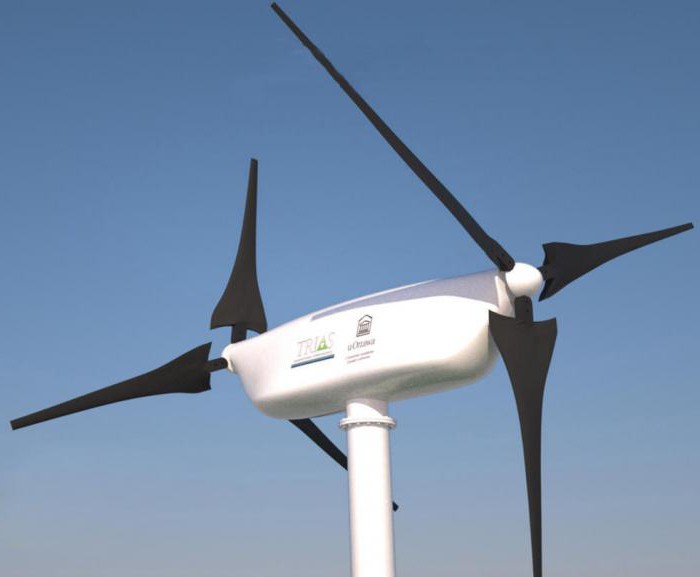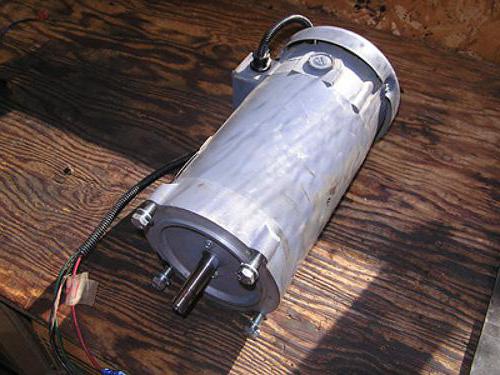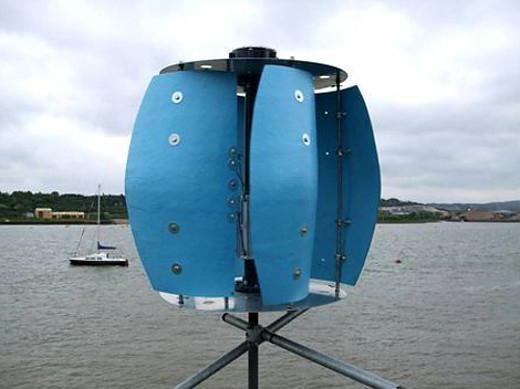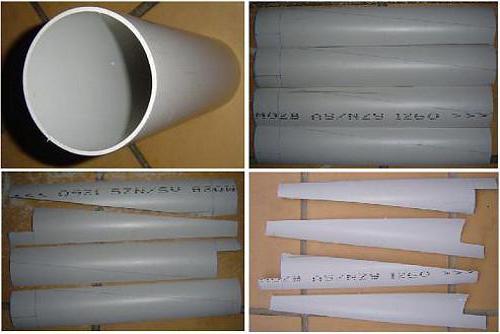Without electricity, a comfortable life is impossible even in the most convenient and largest country house. The first thing that the owners of newly built cottages do is connect them to the power lines. But what if the building was built in a remote area and there is simply no line nearby? Such houses are usually electrified using a diesel or gas generator while installing a windmill. Such a scheme allows you to make the power supply of the building constant and relatively inexpensive. Besides wind farms have a fairly simple design. If desired, such equipment can be made including with your own hands.
Principle of operation
The scheme of operation of the windmill is quite simple and looks as follows:
- When the wind flows around the blades, the rotor generates an unstable alternating electric current.
- Alternating current is rectified by the controller and is used to recharge the batteries.
- The inverter included in the design converts the current from the batteries into alternating current with a frequency of 50 Hz (suitable for most household appliances) and a voltage of 220/380 V.
The rotor with blades is mounted on a special mast. The principle of operation of a wind farm is thus based on the conversion of wind energy into electrical energy. The power of this type of generator also depends on the height of the mast. After all, the longer it is, the higher the wind speed. The length of the pole in any case should not be less than 4 m (from the roof of the building). But most often this indicator is 14-24 m. A windmill is installed either on a concrete site, or using stretch marks. Sometimes this device is attached to the wall of the structure.

High-power wind farms (industrial) are often even built in the form of a large tower. Such designs are used mainly in those small countries where there are few other sources of electricity.
Types of Windmills
There are only two main types of such power generators:
- with a vertical axis;
- with a horizontal axis.
Do it yourself can make wind power plants of both of these types. Horizontal models are usually complemented by the tail. Such models are quite difficult to manufacture, have good performance, but they produce more noise than vertical ones.
How to make a project
Any home wind farm is assembled according to pre-designed drawings. When drawing up a diagram of such a generator, you should first determine:
- With its power. In country houses, 200-500 watts devices are usually used.
- With the shape, length and number of blades. These parameters, along with wind power, in principle, determine the power of the installation.
Blades for homemade windmills can be used:
- Sailing. This variety is easy to manufacture, but does not have very good aerodynamics. Such blades have the usual rectangular shape and are simply mounted in a circle at a certain angle.
- Winged. They have a streamlined shape that eliminates turbulence and allows you to make a powerful, productive generator. Such blades in stations are used most often.
Vertical windmill: equipment selection
DIY wind farms are made using a variety of materials. A fairly powerful and productive vertical model can be made using:
- 12V car generator;
- gel or acid battery 12 V;
- car battery charging relay;
- any voltmeter.
The blades of vertical wind generators are usually made of some kind of metal or plastic container of large volume (barrels, buckets, pans, etc.).

Of the additional elements used:
- 12V switch;
- converter (inverter) 12 V - 220 V to 700 W - 1500 W.
Also, of course, you will need wires, a mast and all kinds of fasteners (bolts, clamps).
The technology of manufacturing a vertical generator
They begin to assemble wind farms for the home with the manufacture of a rotor with blades. To complete this operation, you will need a tape measure and a marker. With their help, mark the blades. A bucket or pan is divided into four equal parts. Then, using a grinder or scissors, the blades are cut out and bent for metal. Further, the procedure should be as follows:
- Holes for the pulley and bolts are cut in the bottom of the tank.
- The bucket is fixed to the pulley.
- A generator is mounted on the mast using clamps.
- Going chain. It is advisable to fix the wires on the mast.
- The battery is connected. In this case, it is desirable to use wires with a cross section of 4 mm2. Their length should not exceed 1 m.
- The inverter is mounted. It should be connected using 4 mm wires2.
- With 2.5 mm wires2 consumers join.
- The mast is installed in the selected location.
Using this technology, pretty reliable vertical wind farms are assembled. How such models work, we considered above. Using equipment assembled according to this scheme, it is possible, for example, to provide lighting for the courtyard and outbuildings, the operation of an alarm system, a video camera, etc. But, unfortunately, such a relatively simple station will not be too productive.

Elements of construction of a horizontal generator
Wind farms of this type are, as already mentioned, somewhat more difficult to manufacture and, moreover, more often have better efficiency. The horizontal axis generator design includes:
- Wheel blades. Better if they are winged.
- Generator.
- Bed under the generator shaft.
- Side scapula. This element has a protective function when the wind is too strong.
- Frame for fixing station nodes.
- Current collector.
- Wheel turning unit.
- Masts
- Shank.
Choosing equipment for a horizontal model
Wind farms for this type of house are also made from a wide variety of materials. It is very simple, for example, to assemble a horizontal windmill from a conventional outdoor room fan. But such a model will be inefficient. Using a generator from a fan equipped with a USB connector, you can only, for example, charge the phone or listen to the radio. To connect household appliances, you will need, of course, a more powerful and thorough model.

Pretty productive home mini-wind power plants can be made, for example, using such equipment and materials:
- plastic pipe for pressure sewer with a diameter of 160 mm under the blades;
- plywood for fastening the blades;
- steel water pipe with a diameter of 100 mm under the mast;
- generator (250 W cycle motor);
- sheet steel 12 mm;
- duralumin beds;
- profile pipe 40x20x2.5 for a protective side shovel;
- carbon steel springs;
- bicycle rope for stretch marks.
Do-it-yourself horizontal wind farm: wheel
To make such a model, as well as vertical, begin with the main working unit. In this case, it is a wheel. The blades from the sewer pipe are cut according to the pattern. Their shape should resemble the wing of an airplane. In total, 6 blades will be needed. They assemble the wheel on a special head, which you can make yourself. For this, a ring is cut out of sheet steel and six beams are welded onto it with holes for attaching the blades.The finished wheel must be balanced. Simply put, you need to ensure that the blades in the absence of wind do not rotate spontaneously. Perform balancing in a garage or other room. On the street, even the lightest breeze can interfere with this procedure.

Horizontal model generator and frame
The bicycle motor should be mounted as securely as possible on the bed. The latter is made of duralumin plate. In it you need to make a threaded hole for the shaft of the bicycle motor. At the corners of the plate, mounting holes are drilled for attachment to the frame. The generator shaft in the bed is fixed by means of a nut with a lock washer. Otherwise, it will scroll. The frame of a horizontal wind generator is made of a steel plate. You can also use a piece of channel.
Current collector and rotary unit
In order for the generator to rotate in the direction of the wind, a special design is assembled. They make a rotary assembly of bearings and bushings. The latter is connected to the mast through the flange. A coupling is welded to the frame. The current collector is assembled as follows:
- on the rotary node place contacts made of brass wire with soldered wires of 4 mm2;
- cover the contacts with a plastic cup and fill with epoxy;
- after the resin hardens, grind the part (until contacts appear);
A current collector is needed so that when the windmill rotates, the wires do not wrap around the mast and do not twist. As a movable contact, you can use brushes from the car starter.
Protective blade
This element is made of a profile pipe and a steel plate of 1-2 mm. Also in its design uses a spring. The principle of operation of this protective element is simple. As soon as the force of the wind exceeds the stiffness of the spring, the windmill will begin to fold. During a hurricane, the blades simply stand parallel to the movement of the air stream. And this will eliminate the fall or breakdown of equipment. The tail of the tail of the windmill is attached to the frame through a hinge (with a diameter of 12 mm or more) made of structural steel.
How to install
Wind farms should be located away from various obstacles (buildings, trees, etc.). Under the mast, it is worth pouring the concrete pad. Otherwise, it will push through the soil. As extensions, it is easiest to use cables with a cross section of 6 mm or more. They should be fixed to strong steel pegs poured into concrete as well. On the mast itself, stretch marks are fixed by means of clamps. A pole with a wheel is usually installed using a counterweight boom.
Solar Generators
This equipment is often used in addition to windmills. The combination of these two devices allows you to organize the most efficient energy supply at home. Wind and solar power plants have a similar design. The components of the second are:
- batteries
- charge converters and controllers.
However, in this case, photocells, rather than blades, are used as the main working unit. To assemble such a generator, like a windmill, you can do it yourself if you wish. This procedure is not too complicated, but the problem may be the purchase of solar cells. The fact is that they are very expensive.

Solar and wind power plants for the home use free energy, and therefore are considered equipment very promising. Despite the relatively low efficiency and high cost, devices of this type are unusually popular with owners of country houses. Indeed, in any case, such an installation must pay off.
